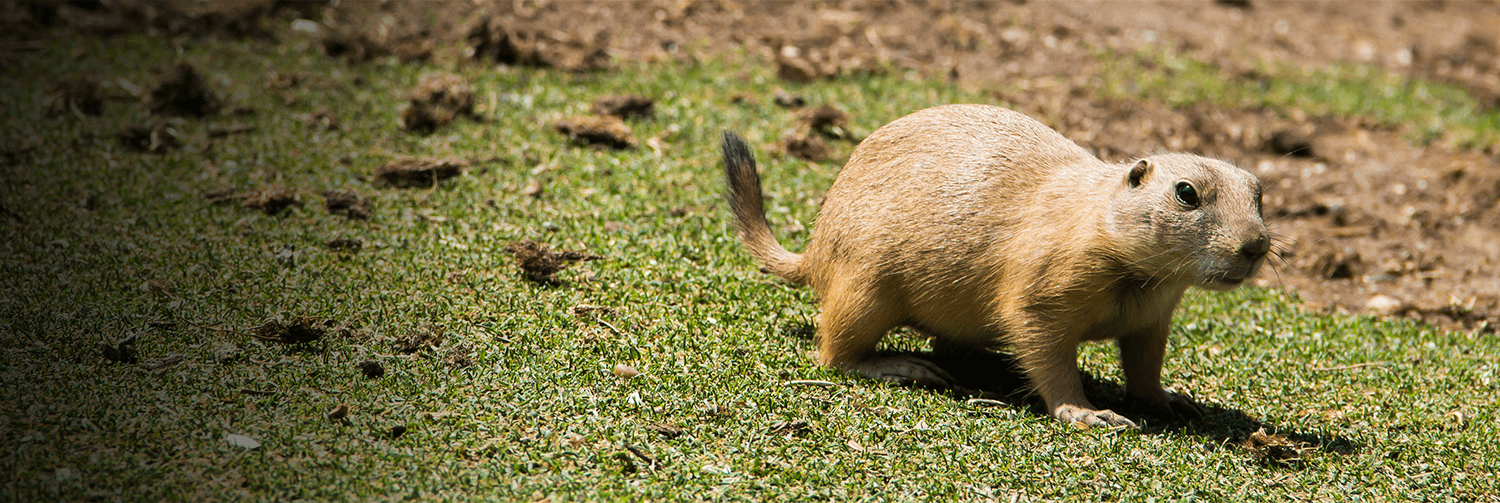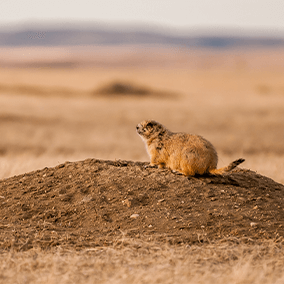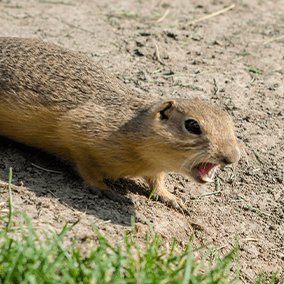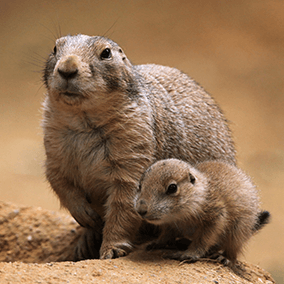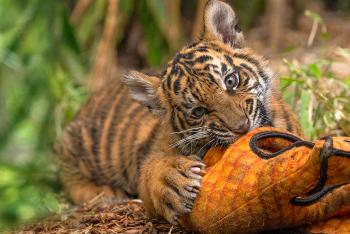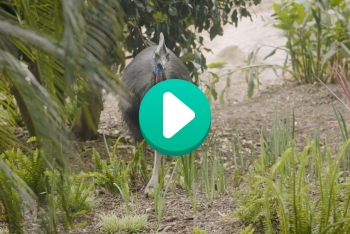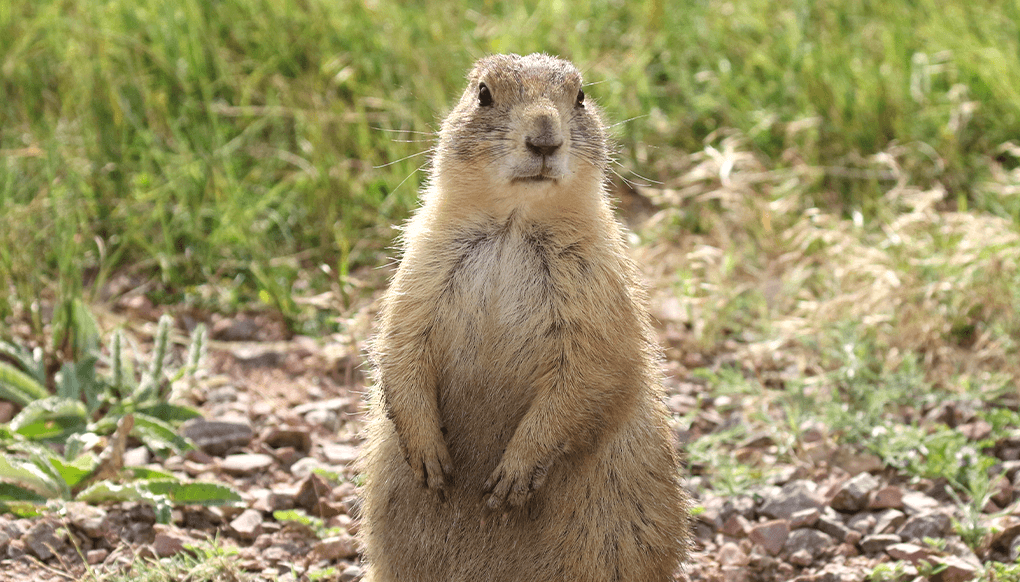
Prairie dog

Mammals


Some Endangered
facts


Prairie dogs eat grasses, roots, seeds, and other leafy plants.
description
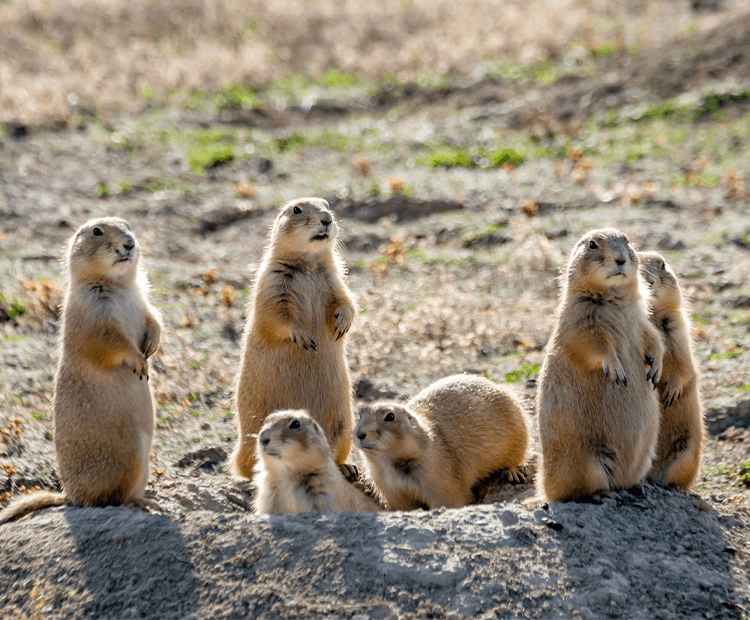
Dog towns
Prairie dogs are social rodents that live in huge, underground burrows, called towns. style They make these towns in the prairies and plateaus of North America. Undisturbed towns sometimes have tens of thousands of prairie dog residents and go for miles in every direction. Each town consists of subgroups, or wards—and wards are, in turn, split into family groups called coteries. Each coterie defends a home territory of about 1 acre from surrounding coteries. The typical coterie territory has 70 separate burrow entrances.
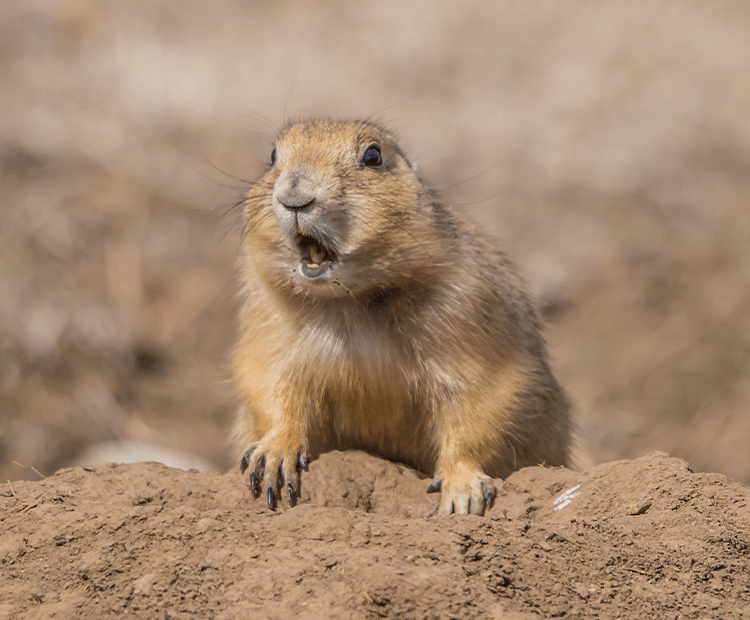
Bark-like conversations
Settlers called prairie dogs "dogs" because of their high-pitched, bark-like call. Prairie dogs have a communication system that warns other members of their town of danger. Different sounds identify various predators such as hawks, owls, eagles, ravens, coyotes, badgers, ferrets, and snakes.
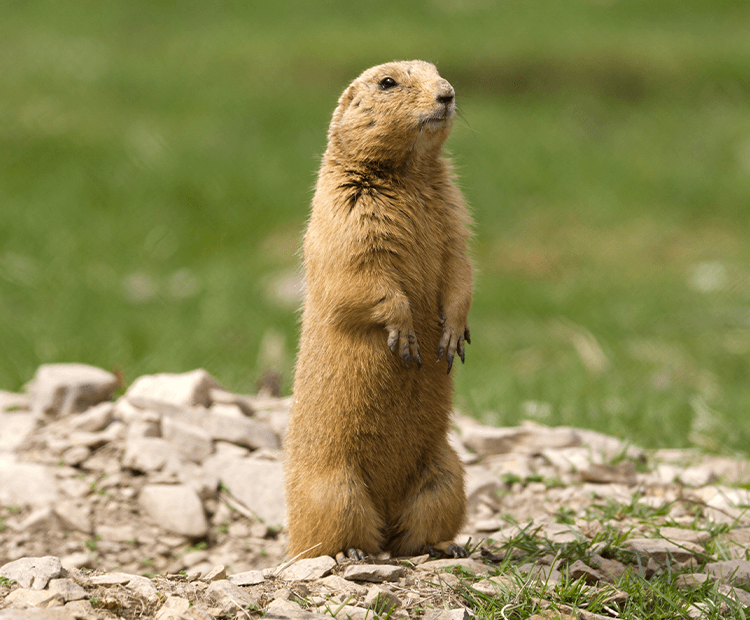
Lookouts
When a predator approaches, the first alert prairie dog gives a sharp warning call, bobs up and down in excitement, calls again, and then plunges into the burrow below. This warning call is a 2-syllable bark, issued at about 40 barks per minute. Other lookouts farther from the danger zone take up the watch, noting the progress of the predator and alerting the town members along the route.

